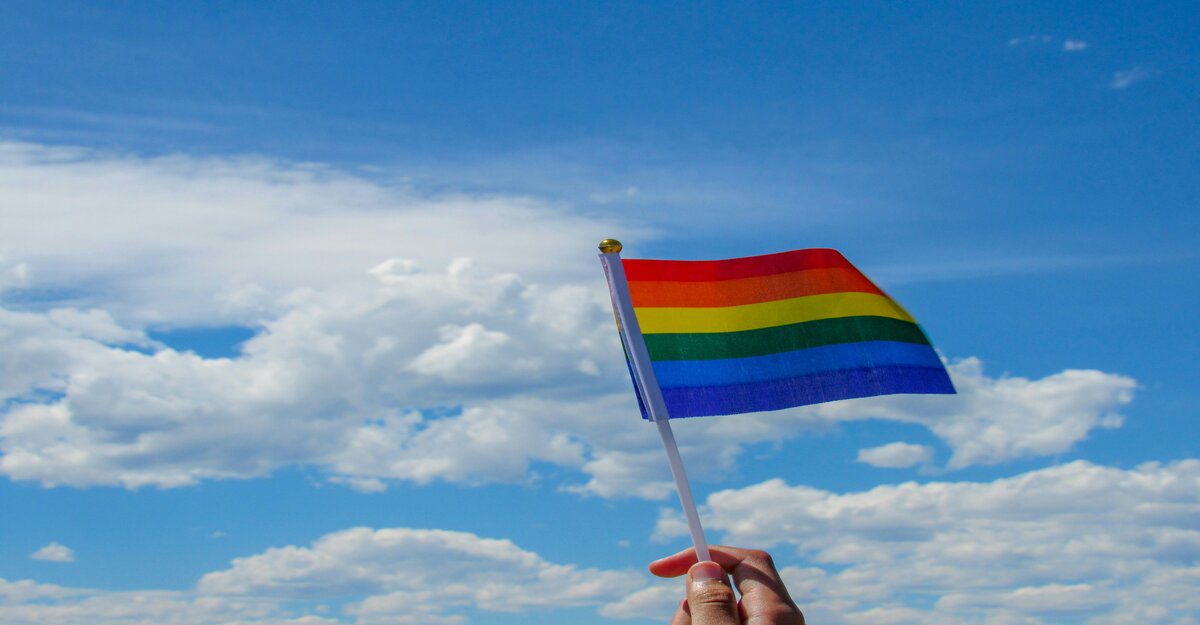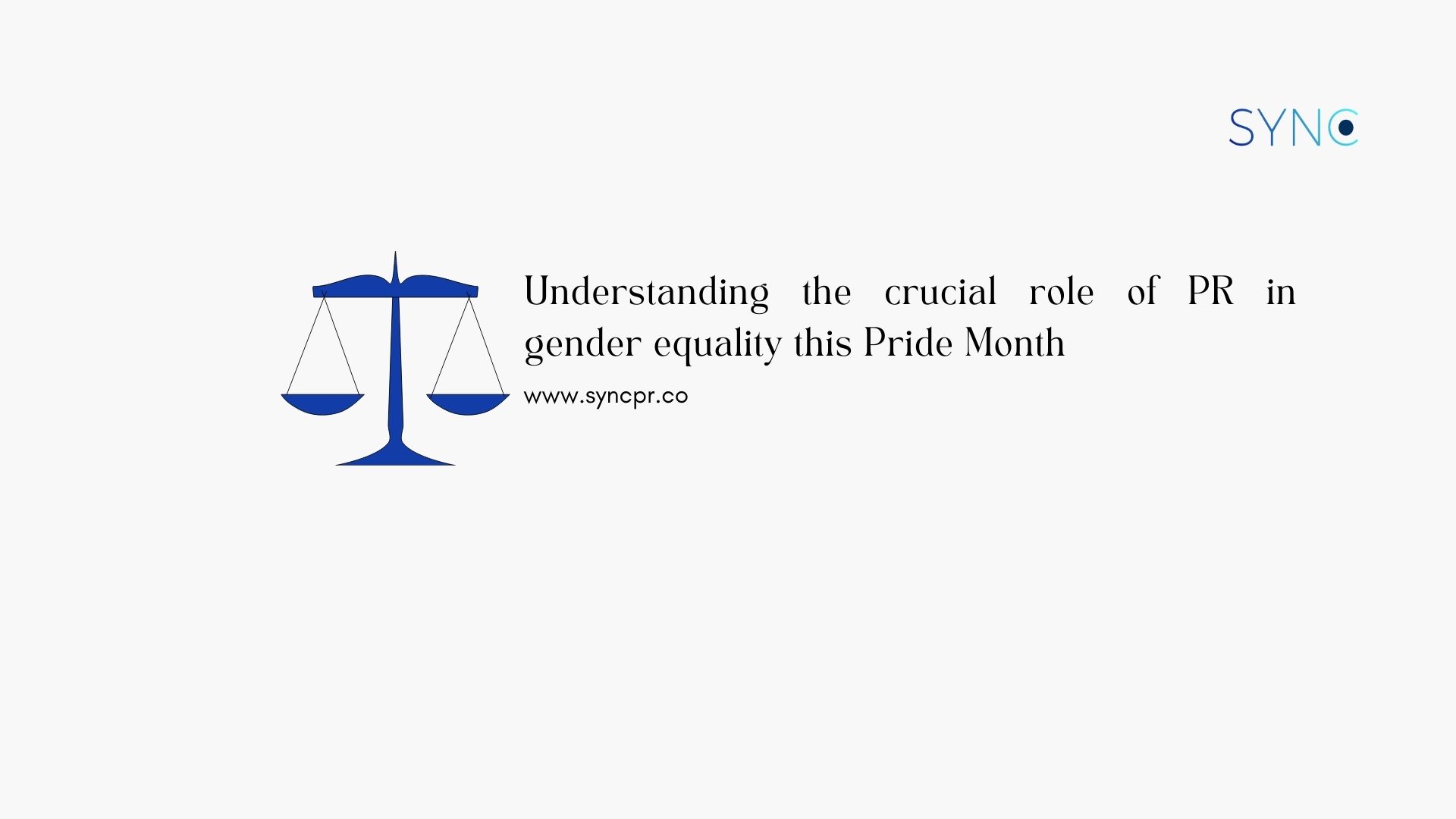How important is the role of PR in gender equality and sex perceptions? The short answer is “very”. The opinions and perceptions the public has around gender, sexuality, and the LGBTQIA+ community have undergone a remarkable shift, with public relations (PR) playing a pivotal role in shaping these evolving societal views.
In recent years, we have witnessed a surge of inclusive representation in media and marketing, fostering greater awareness and understanding of diverse gender identities and expressions. While there is still much debate on whether such Pride campaigns are merely pandering to the masses or stem from genuine advocacy, we cannot deny that the growing awareness and acceptance of LGBTQIA+ communities is largely due to the work of PR behind the scenes.
In celebration of Pride Month, we dive into the transformative power of PR in influencing public perceptions of gender and sexuality. We will explore the evolution of LGBTQIA+ representation and the crucial role of PR in gender equality and in driving positive change.
The evolution of LGBTQIA+ representation and the role of PR in gender equality
Early efforts: Alcohol brands and “gay vague” campaigns
Major corporations’ earliest efforts to court queer consumers happened after the 1969 Stonewall uprising and the first Pride march in 1970, marking a turning point in LGBTQIA+ visibility and the modern gay rights movement. This early period from the 1960s had marketing campaigns take form through protests and on-the-street activism. It was only in the late 1970s that alcohol brands like Miller Lite, Budweiser, Coors Light, and Jägermeister were among the first to place ads in regional queer newspapers in the United States. Swedish vodka brand Absolut followed suit in 1981, maintaining a constant presence in queer markets and developing a deep partnership with GLAAD, the world’s largest queer media advocacy group throughout the 1980s.
The 1990s: Increased visibility and market research
The presence of more queer characters in television raised LGBTQIA+ visibility in the 1990s. After market research revealed lesbians as a key customer base, Subaru leaned into the “gay vague” approach – adopting subtle elements that would be picked up by queer audiences while flying over the heads of heterosexual audiences. A classic “gay vague” Volkswagen commercial debuted during Ellen’s coming-out episode 1997. Notably, President Clinton declaring June as Gay and Lesbian Pride Month in 1999 ushered in a new era of queer marketing that encouraged more brands to be forthcoming in their campaigns and representations to these overlooked groups.
The 2000s: The rise of overt LGBTQIA+ representation in marketing, PR and advertising campaigns
Despite the growing presence of gay characters in early 2000s entertainment, brands still risked backlash for showing explicit LGBTQIA+ inclusivity, with negative or no representation of transgender and non-binary identities. By the 2010s, same-sex couples were commonly represented in commercials, print ads, and billboards as the $743 billion LGBTQIA+ consumer market grew in the West. However, in Asian societies such as Singapore, such adoption has been much slower.

Fortunately, Singapore has become somewhat more open to LGBTQIA+ sponsorships and conversations after the repeal of Section 377A in 2022. Local events like Pink Dot have been garnering more support and participation from the public while retro cinema The Projector encourages normalisation and exposure to the community through their annual Pink Screen Film Festival. While many brands remain cautious, a shifting sentiment towards greater inclusivity is evident, driven by consumer and employee demands for purpose-driven, inclusive organisations. However, concerns around “rainbow washing” and the need for genuine, year-round LGBTQIA+ support persist.
Contemporary challenges and backlash
Token representation and stereotyping
While LGBTQIA+ representation in media has progressed, we still encounter tokenism and harmful stereotypes that undermine authentic portrayals. Tokenised characters are often inserted as an afterthought, lacking depth and individuality compared to their heterosexual counterparts. Stereotypical depictions, such as associating LGBTQIA+ identities with negative traits, reinforce biases and create unsafe environments. This is where PR has played and continues to play an important role in creating nuanced storytelling that avoids caricatures and promotes intersectionality, which is crucial for positive representation.
Corporate response and responsibility
While some brands retreated amid backlash, others doubled down on Pride support. With Gen Z’s high LGBTQIA+ identification rates, brands recognise the importance of this consumer segment. However, authentic, consistent support is key, as “rainbow washing” can cause mixed responses and damage consumer confidence. Brands must stand by their Pride marketing, communicating these narratives beyond campaigns and through their brand values to avoid alienating the LGBTQIA+ community and allies. The role of PR in gender equality can only come to fruition if brands are ready to go the extra mile.
Case study: The Science Centre Singapore
Take, for example, the cancellation of an event discussing gender and sexuality at the Science Centre Singapore, due to pressure from a vocal minority. Intended to discuss the sociocultural factors that shape society’s understanding of sex and gender, the event included an Associate Professor whose research interests are gender and sexuality from NUS, a gay-trans youth counsellor and a local drag queen.
“Following online publicity of the session, we had received public feedback expressing concern about the content to be discussed in the session, as well as the composition of the speakers.” – A spokesperson from the Science Centre Singapore
This incident revealed how conservative societies still lack a platform for conversations that could have served as a safe, open and trusted foundation for understanding differences in human nature. More often than not, these topics are sadly seen as “taboo”, coming into direct conflict with deep-rooted bias and misconception.
Trusted, reputable institutions such as Science Centre Singapore strive to uncover a broader societal interest in nuanced discussions on these topics but also highlight raising concerns about the influence of certain groups in silencing productive conversations they disagree with. The ease with which this event was cancelled underscores the need for PR professionals to promote transparency and facilitate open dialogues, and exemplifies the crucial role of PR in gender equality.
The role of PR in gender equality and influencing public perception
Shaping societal attitudes
Effective PR campaigns can increase representations of diverse gender identities and expressions in news, television, movies, and advertising, gradually normalising and destigmatising these narratives. As audiences, particularly younger generations, are exposed to inclusive portrayals, their perceptions and values are influenced, even across national borders. PR professionals now have the golden opportunity to share authentic stories, promote intersectionality, and educate the public on LGBTQIA+ topics.
Turning challenges into opportunities for inclusivity and education
The role of PR in gender equality is vital. PR professionals can leverage social media, public statements, and internal communications to share authentic stories, counter harmful narratives, and promote equality. Collaborating with media outlets to ensure fair and accurate reporting on LGBTQIA+ issues is crucial in shaping public perceptions. Moreover, PR efforts can amplify the voices of underrepresented groups, fostering a more inclusive and representative depiction of diverse identities in the media.
Role of PR in gender equality and inclusivity for under-represented and marginalised groups
Moving beyond Pride Month initiatives
While Pride Month initiatives are commendable, true inclusivity demands a sustained, year-round commitment from brands. Many consumers perceive such efforts as tokenistic or inauthentic, leading to criticism of “rainbow washing” or “queerbaiting”. To foster genuine belonging, companies must proactively create safe spaces that embrace the LGBTQIA+ community across all customer touchpoints. All key stakeholders need to understand the crucial role of PR in gender equality and implement it in their messaging throughout the year.
Addressing the underrepresentation of diverse identities
Authentic representation goes beyond tokenism, requiring nuanced storytelling that avoids stereotypes and caricatures. Brands should celebrate intersectionality and accurately portray the diversity within the LGBTQIA+ community, for target audiences to feel genuine connections with the brand through diversity and inclusion. Focusing on shared human experiences can help connect with diverse audiences organically. Brands need to understand the role of PR in gender equality and inclusivity and leverage it to spread the right messaging to their audiences.
PR has done good, but more needs to be done
The role of PR in gender equality cannot be ignored or undermined. As society evolves, so too must our approach to representation and inclusivity. Although progress has been made, challenges persist, and the need for authentic storytelling and genuine support remains paramount. PR professionals and startups must prioritise inclusivity in their practices, amplifying diverse voices and fostering a culture of belonging. In the long run, the future looks hopeful where cultural shifts are positively inclusive for all.
If you are unsure about how to curate impactful inclusive marketing campaigns or learn about PR’s relevance to the business strategy, drop us an email at hello(a)syncpr.co to find out more.

